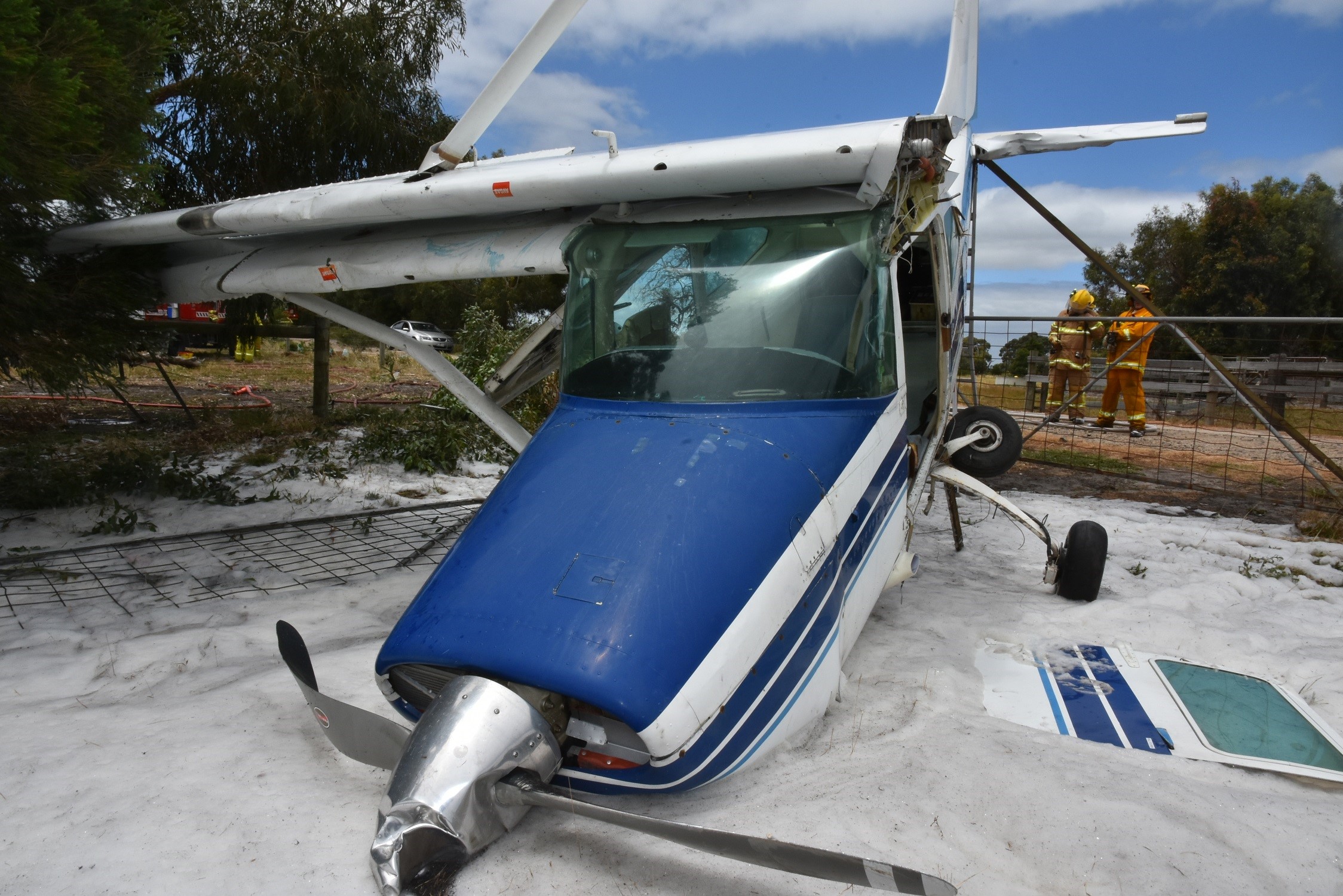
Corrosion in the carburettor of a Cessna 182’s engine, which led to a power loss after take-off and a subsequent forced landing, demonstrates the importance of following maintenance periodic inspection requirements.
On the morning of 6 January 2019, Cessna 182 registration VH-DGF took off from Tooradin Airfield, Victoria for skydiving operations with the pilot and four parachutists onboard. The aircraft continued to climb but at about 400 ft the engine sustained a sudden power loss. Climb performance was affected and the propeller windmilled.
The pilot lowered the aircraft nose and identified a suitable location for a forced landing. The aircraft touched down in a relatively flat and open paddock and initially bounced and passed through two boundary fences. The left wing strut then collided with a tree, folding the left wing over on top of the right wing. The Cessna then collided with a third fence, crossed a private road and collided with a fourth fence collapsing the nose landing gear where it come to a stop.
With limited time and height available, the pilot displayed sound airmanship and decision making.
The aircraft was substantially damaged, but there were no injuries to the pilot and passengers. However, the investigation report does note that by not wearing the available upper torso restraint the pilot exposed himself to significant unnecessary injury risk, and highlights that a substantial body of research shows that wearing an upper torso restraint significantly reduces the risk of injury compared to just wearing a lap belt only.
Following the accident, subsequent examination of the carburettor found a significant amount of aluminium oxide deposits in the carburettor float bowl and directly below the carburettor nozzle and main jet assembly.
Loose aluminium oxide deposits likely blocked fuel flow within the carburettor resulting in the engine losing power shortly after take-off.
With limited time and height available, the pilot displayed sound airmanship and decision-making by accepting the risk of a minor accident and conducting a forced landing rather than turning back and risking loss of control and the possibility of a much more serious outcome, the report notes.
This investigation also highlights the importance of following the maintenance program for your aircraft to ensure its serviceability, particularly as in this case, draining and flushing the carburettor at its periodic inspection.
The ATSB was unable to determine the extent to which this action was actually conducted during the six inspections since the engine and carburettor were overhauled in December 2011.
Read the report: Loss of power on take-off and forced landing involving Cessna 182, VH-DGF, Tooradin, Victoria, on 6 January 2019


